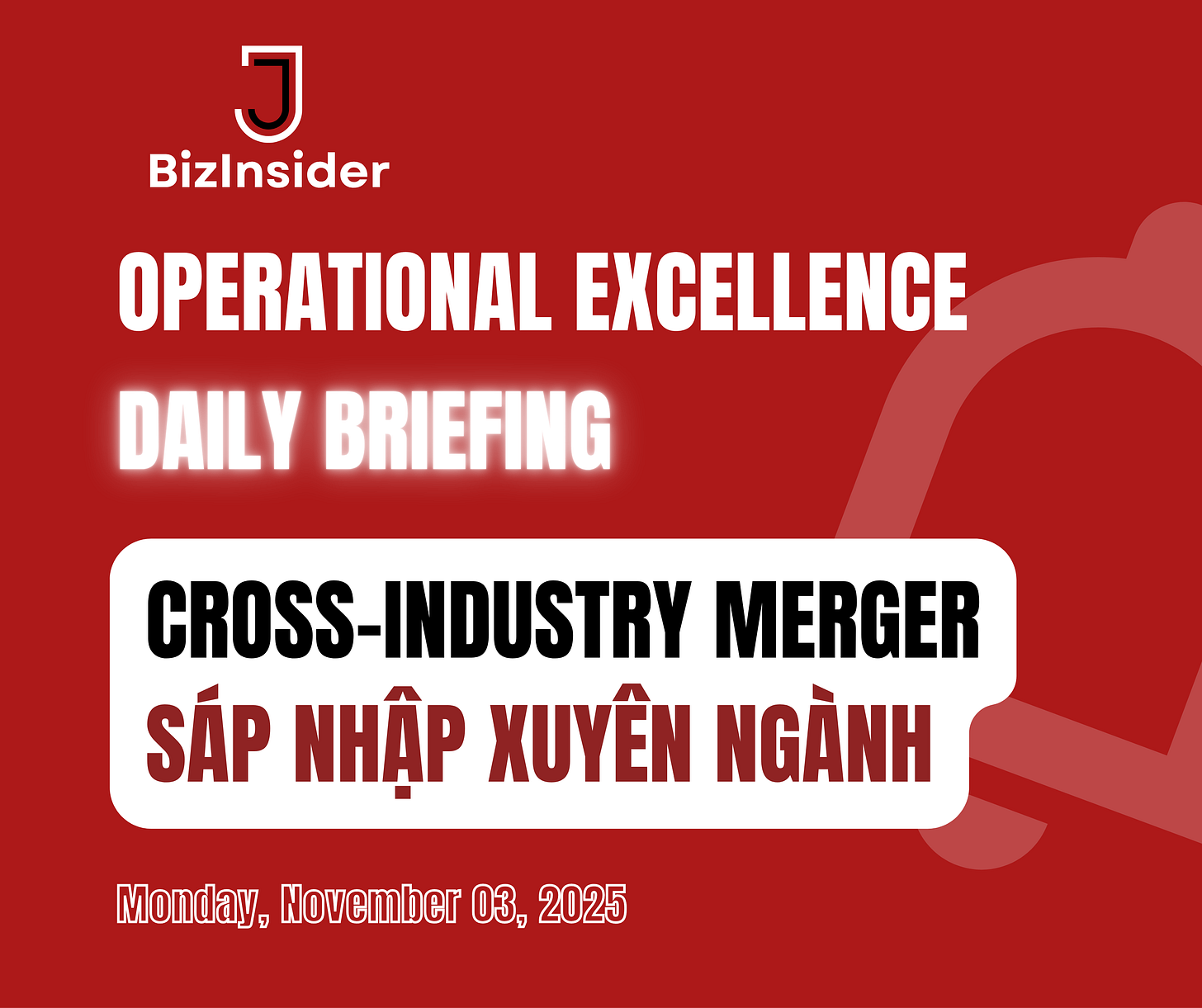Operational Excellence (OPEX) Daily Briefing – Monday, November 03, 2025: Cross-Industry Merger: An OPEX Lesson from Kimberly-Clark & Kenvue.
Điểm Tin Operational Excellence (OPEX) Mỗi Ngày – Thứ Hai, Ngày 03/11/2025: Sáp Nhập Xuyên Ngành – Bài Học OPEX Từ Kimberly-Clark & Kenvue
Welcome to my unique weekday article for the paid subscriber-only edition.
Operational Excellence (OPEX) Daily Briefing – issued on weekdays (Monday to Friday).
Điểm tin Operational Excellence (OPEX) hằng ngày (phát hành các ngày thứ Hai đến thứ Sáu).
This is the bilingual post in English and Vietnamese. Vietnamese is below.
Đây là bài viết song ngữ Anh-Việt. Tiếng Việt ở bên dưới.
English
Part 1: Official Statement – When Kimberly-Clark “Steps Out of Its Comfort Zone” With the Kenvue Merger
On November 3, 2025, Kimberly-Clark Corporation — the global consumer goods giant known for brands such as Kleenex, Huggies, and Kotex — announced its plan to acquire Kenvue Inc., the parent company of well-known health and wellness brands including Tylenol, Listerine, and BAND-AID.
According to reports from Reuters, Bloomberg, and AP News, the deal is valued at approximately US$48.7 billion, financed through a combination of cash and stock.
If completed, the merged entity between Kimberly-Clark and Kenvue would generate annual revenue of around US$32 billion, making it one of the world’s largest consumer goods conglomerates in the health, hygiene, and wellness sectors.
Boards of directors from both companies have approved the deal, with Kimberly-Clark shareholders expected to hold about 54% and Kenvue shareholders around 46% of the new company.
The merger is projected to close in the second half of 2026, pending regulatory approval.
(Source: Reuters – “Kimberly-Clark to acquire Kenvue in US$48.7 billion deal,” Nov 3, 2025; Bloomberg News – “Kimberly-Clark expands into health and wellness with Kenvue purchase,” Nov 3, 2025)
Kimberly-Clark stated that the acquisition aims to expand its portfolio into health care and medical consumer products, segments with higher profit margins and long-term growth potential.
Company executives expect to achieve about US$1.9 billion in cost synergies and US$500 million in additional profit, leveraging both companies’ manufacturing scale, distribution networks, and strong brand portfolios.
(Source: AP News – “Kimberly-Clark to merge with Kenvue, creating a global health and hygiene leader,” Nov 3, 2025)
However, the initial market reaction was mixed. Kimberly-Clark’s stock price dipped slightly after the announcement as investors expressed concerns over financial costs and operational integration risks.
Analysts noted that merging two corporations with different value chains, distribution models, and operational cultures could present significant challenges in the early stages.
Kenvue — which spun off from Johnson & Johnson in 2023 — continues to face legal disputes and high compliance costs related to its medical consumer products, including Tylenol.
This complexity adds further difficulty to the integration process.
(Source: The Guardian – “Kimberly-Clark to acquire Tylenol owner Kenvue in record US$48.7 bn merger,” Nov 3, 2025)
For Kimberly-Clark, the deal represents a strategic pivot — from a traditional consumer goods manufacturer to a leading player in health and personal care.
While the merger opens opportunities for market expansion, it also demands operational restructuring, supply chain integration, compliance alignment, and technology modernization to ensure long-term efficiency.
From an Operational Excellence (OPEX) perspective, this is a textbook example of cross-industry integration challenges — where a company rooted in fast-moving consumer goods (FMCG) acquires an organization focused on medical and healthcare products, which operate under stricter quality, testing, and regulatory standards.
Differences in value chains, operating standards, and risk management systems can create substantial friction if not standardized promptly.
This underscores a critical truth: growth through acquisition does not automatically mean greater efficiency, unless the operational system is redesigned to suit the new scale.
In other words, the Kimberly-Clark–Kenvue merger perfectly illustrates a key principle of modern business management:
“Every merger is, at its core, a complete operational reconstruction — not merely a financial transaction.”
The ultimate success or failure of this deal will depend not only on how much combined revenue the companies can generate, but on whether they possess the OPEX capabilities to integrate, standardize, and optimize global operations effectively.



